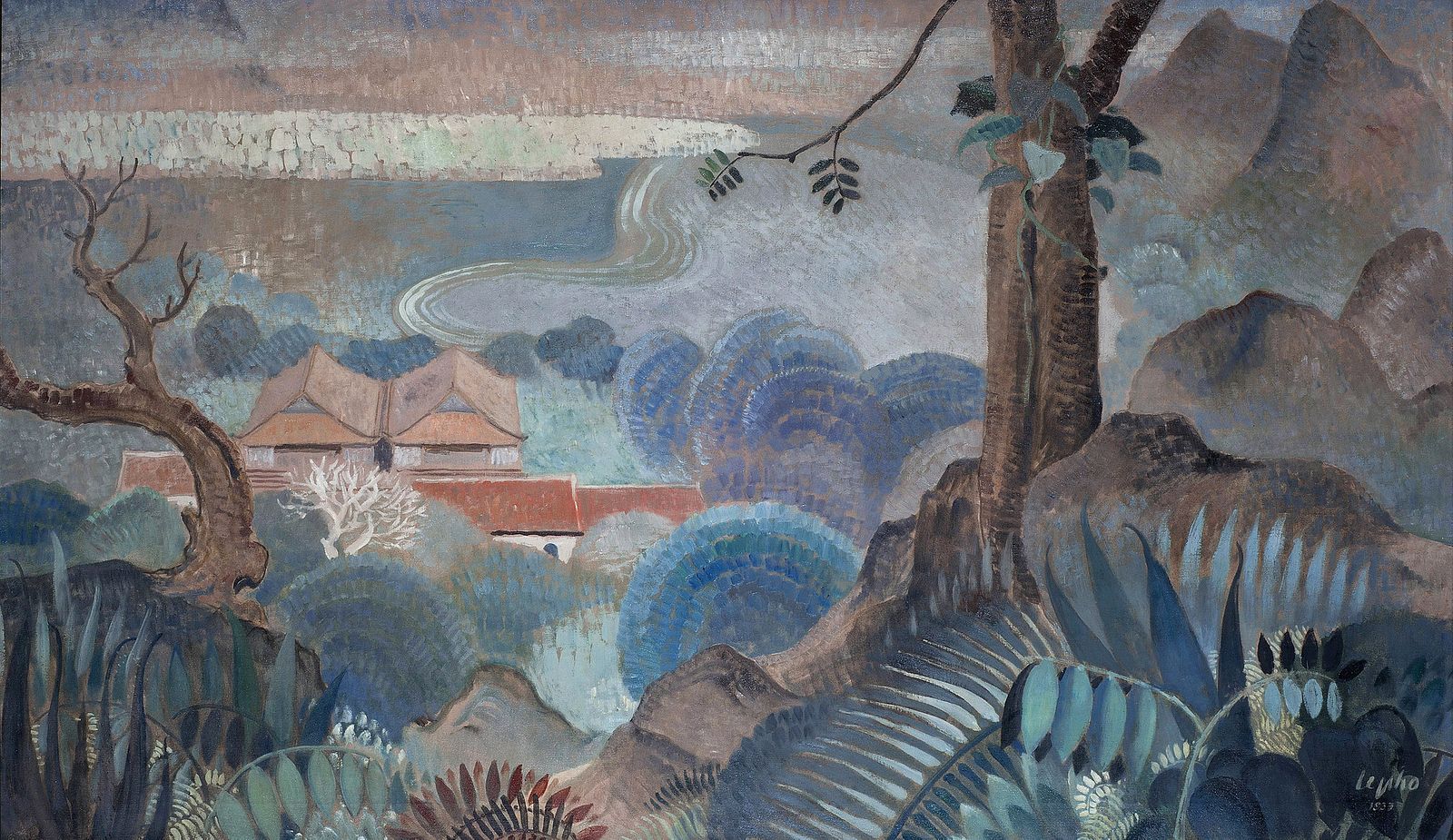The art of Lê Phổ, one of Vietnam's most celebrated painters, evolved significantly during his career.
The 10th of 20 children born to a wealthy mandarin, Lê Phổ (1907-2001) was in the first class of students to study at Hanoi's French-sponsored École des Beaux-Arts in 1925, and relocated to Paris five years later. He returned to Vietnam to teach at the school from 1933 to 1936 before again departing for Paris, where he would reside for the remainder of his life.
Lê Phổ's career contained three distinct periods during which he was able to commingle impressionism, surrealism and traditional Chinese styles. His early work featured nostalgic depictions of Vietnamese landscapes, flowers and birds painted with watercolors on silk using long, thin brushes.
He then transitioned to placing thick oil paint brushstrokes on canvas and began to include more interior scenes, female figures, and sensual elements, including nude figures, which was unacceptable in Vietnam at the time. Art critics praise him for how drastically his style shifted during his life.
While Lê Phổ was successful during his life and sold paintings to some of the world's most prominent collectors, his status has risen in recent years as Vietnamese art has become increasingly popular. In 2019, his painting 'Nude,' or 'Nue' in French, sold for US$1.4 million, more than 2.5 times its expected value at an auction at Christie's in Hong Kong. That was a record for a Vietnamese painting.
This collection of photographs of his paintings reveal how his style and technique changed. A few snapshots of him at events and exhibitions also gives insight into the upper-crust Parisian art world that he circulated in.

"'La Toilette" (Washing) painted in 1942 and sold for approximately US$250,000.

"L'Ile heureuse" (Happy island) painted in 1930.

Lacquer work painted on wood panels in 1930 or 1931.
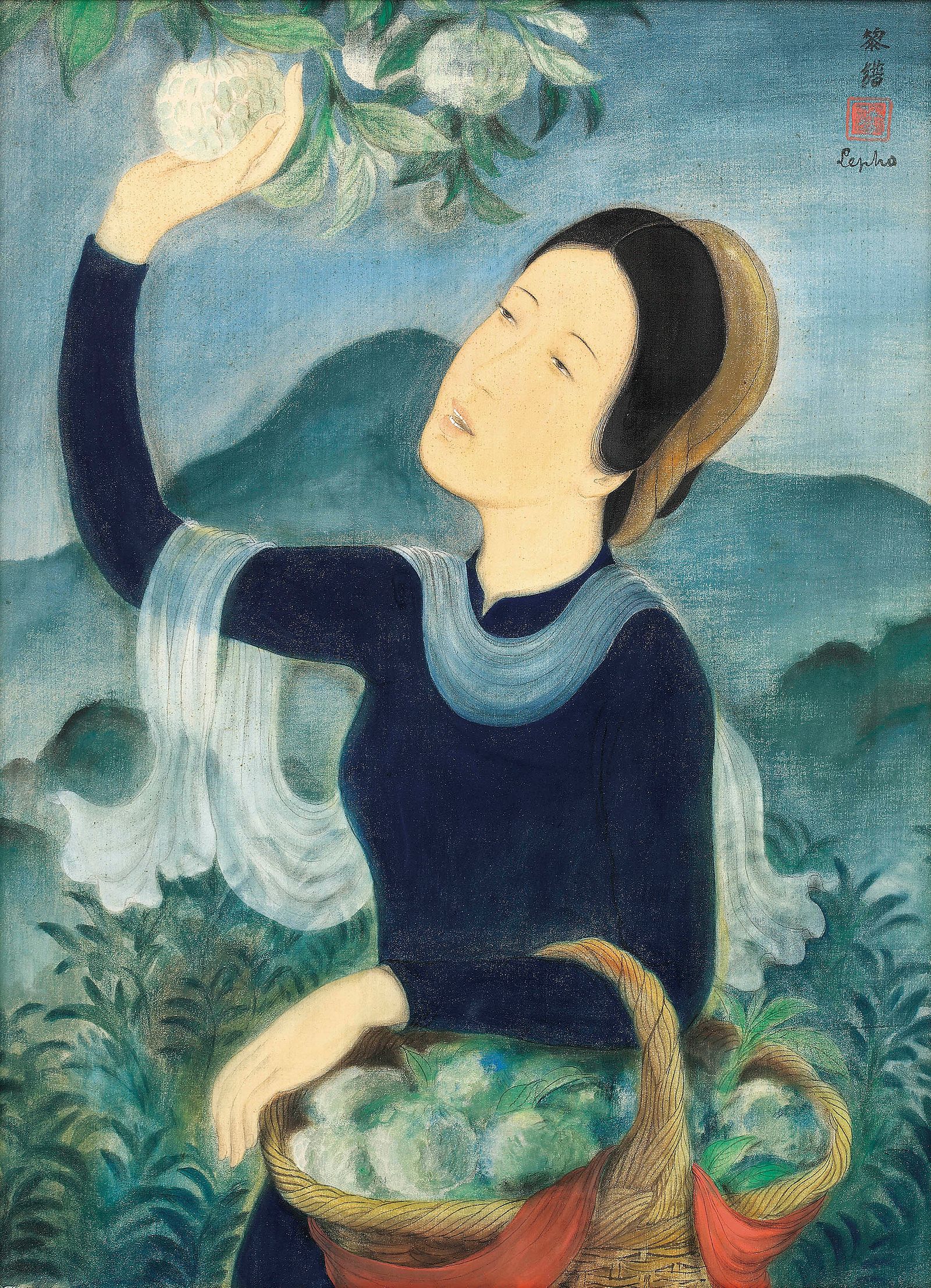
"La jeune fille aux pommes-cannelle" (Young woman with custard fruit) painted in 1938 and sold at auction for approximately US$538,000 in 2018.
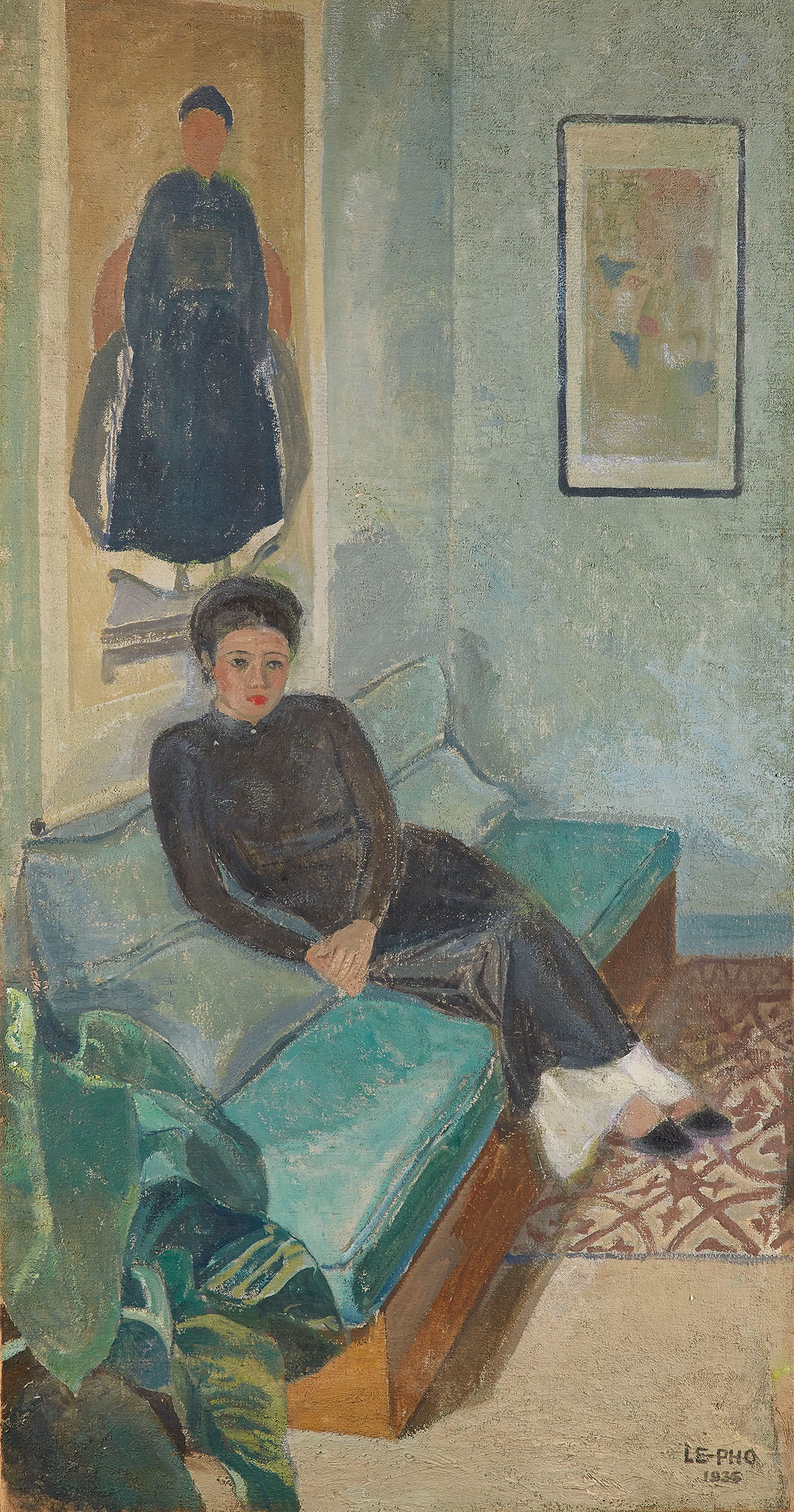
"Portrait of the Artist Le Thi Luu" painted in 1937 and sold at auction for approximately US$250,000 in 2014.
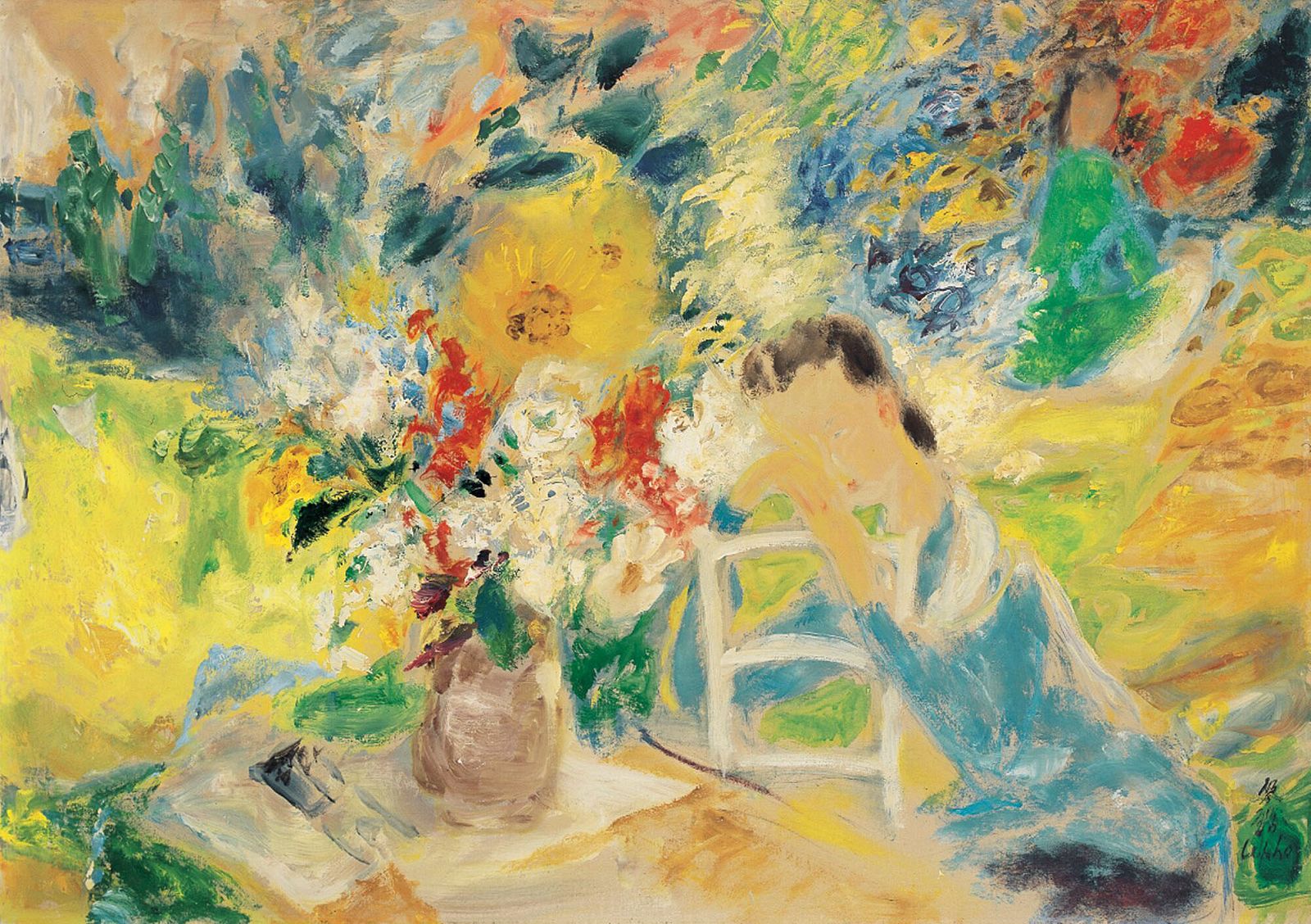
"Dans Le Jardin" painted in 1960.
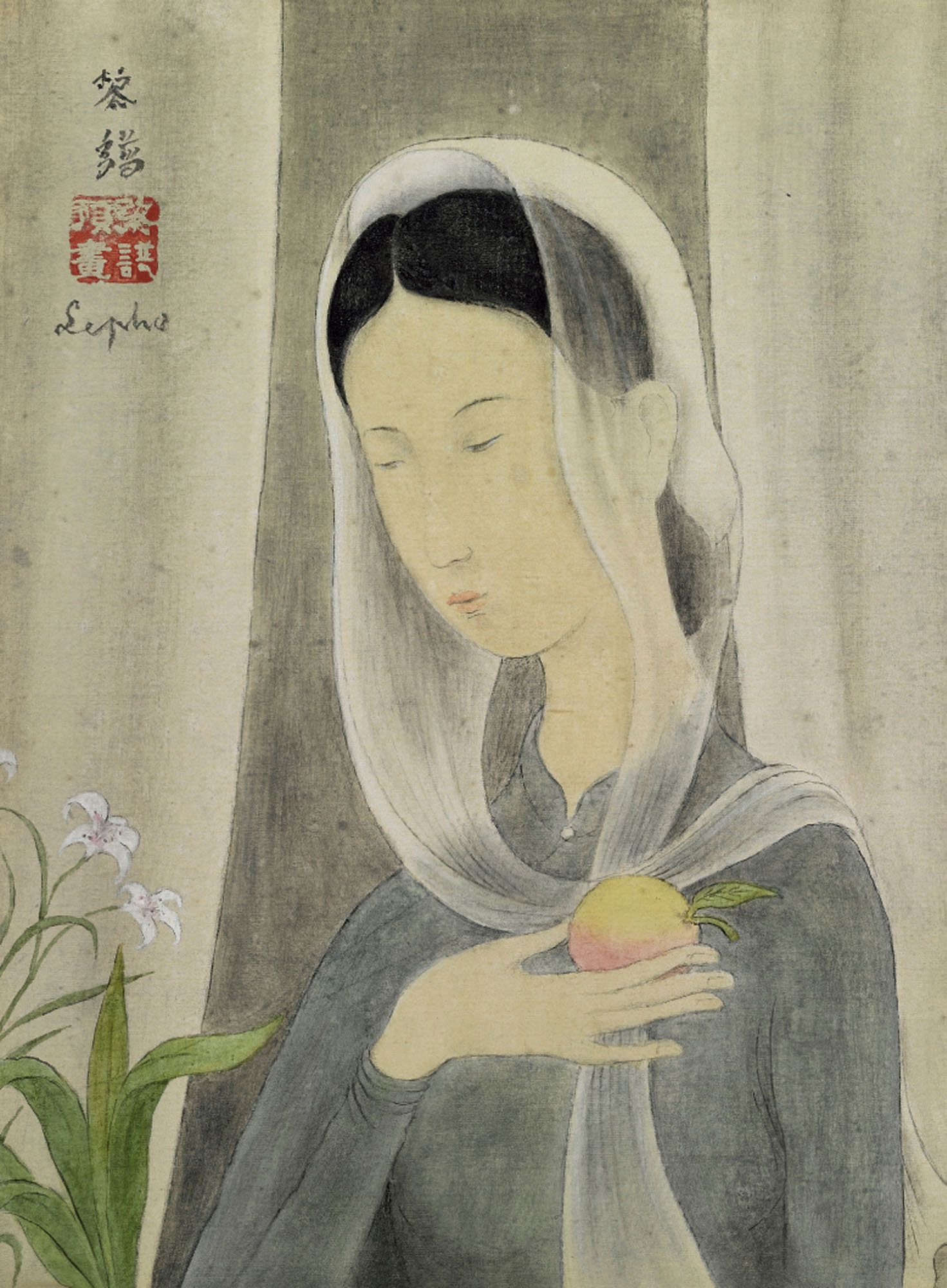
"Femme À La Pechê" (Woman with a peach). Painted in 1940.

"Maternité" (Maternity). Painted in 1938 and sold at auction for US$139,602.
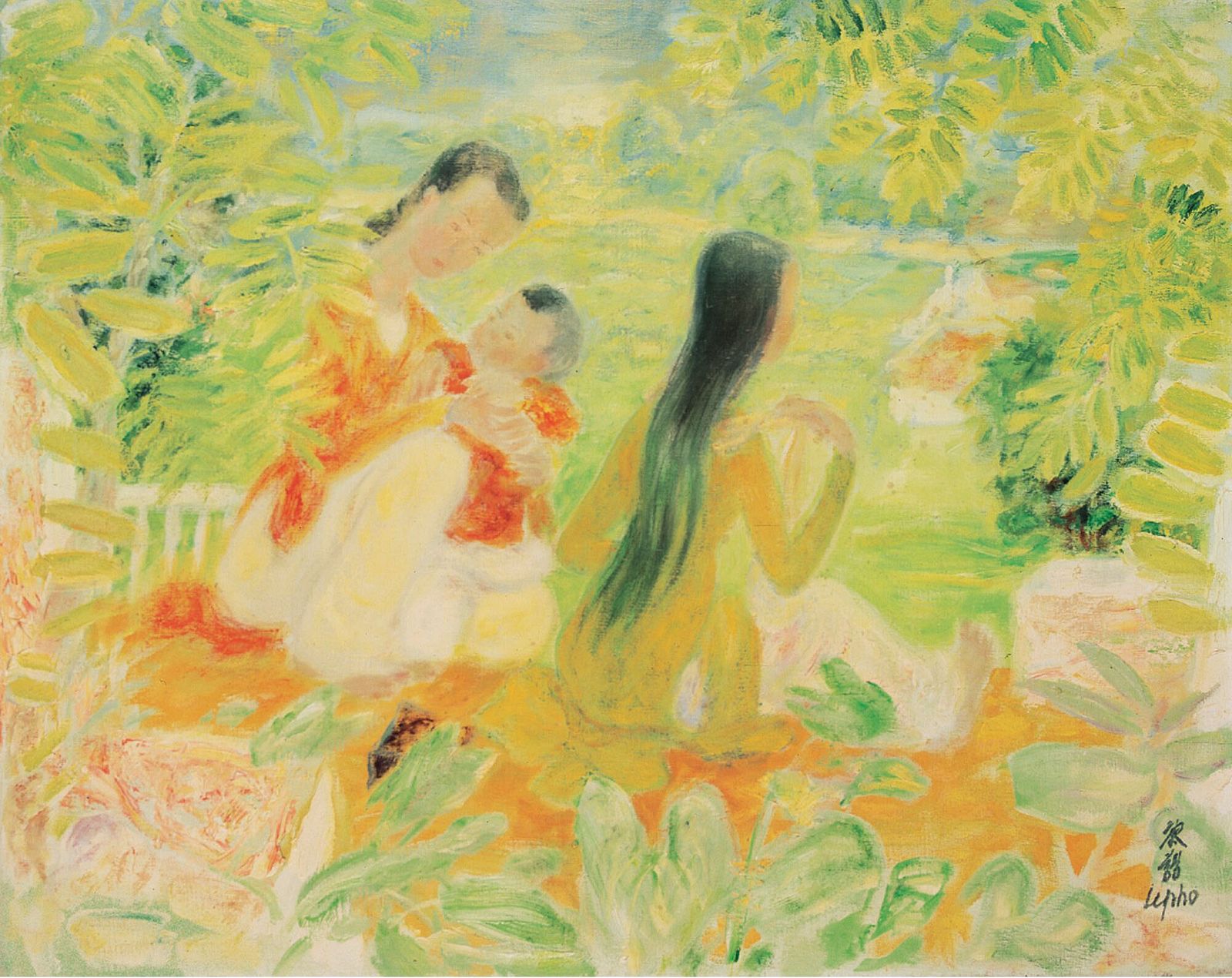
"Composition" painted in 1940.
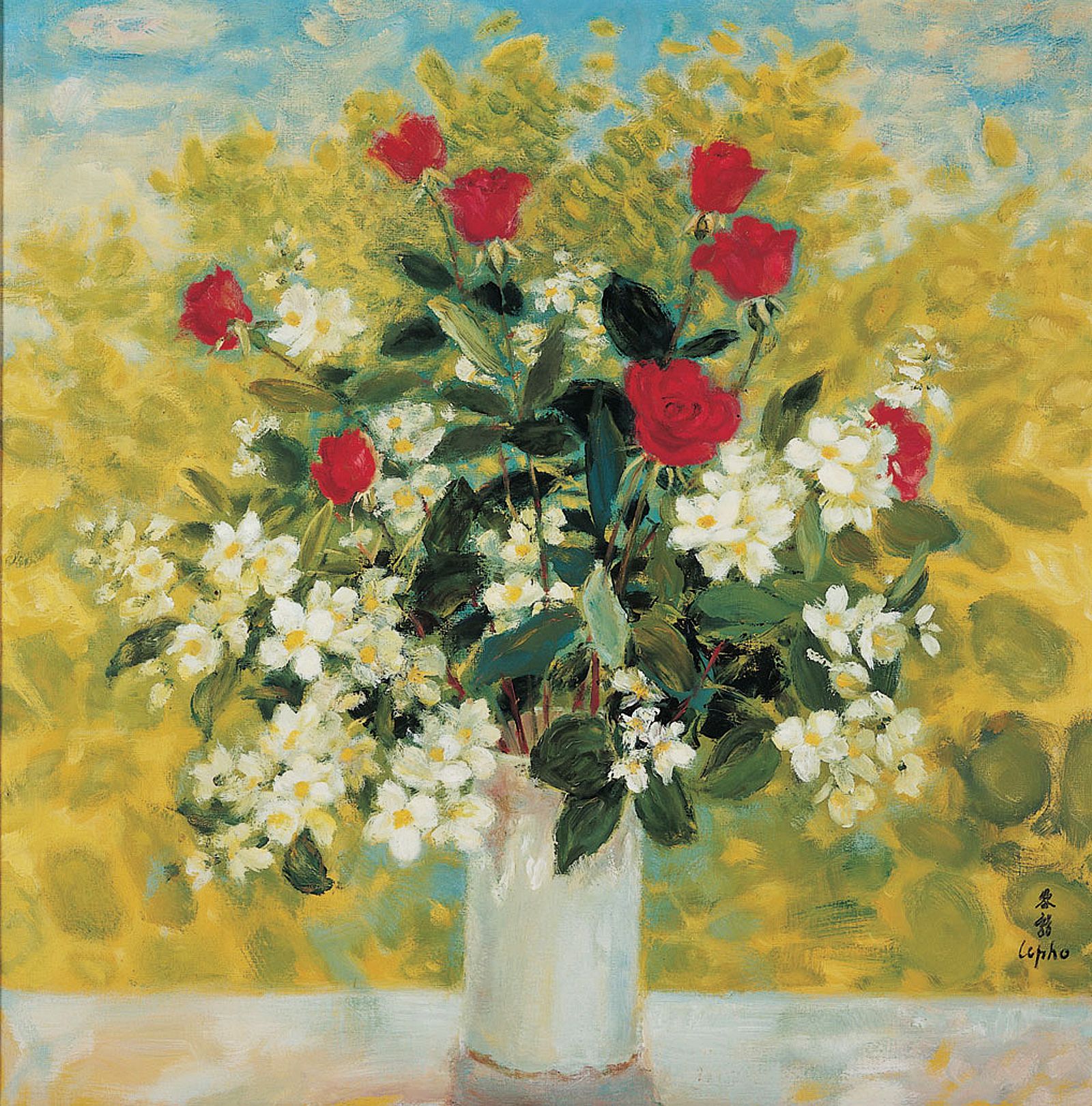
"Les roses et les syringas" (Roses and syringas).
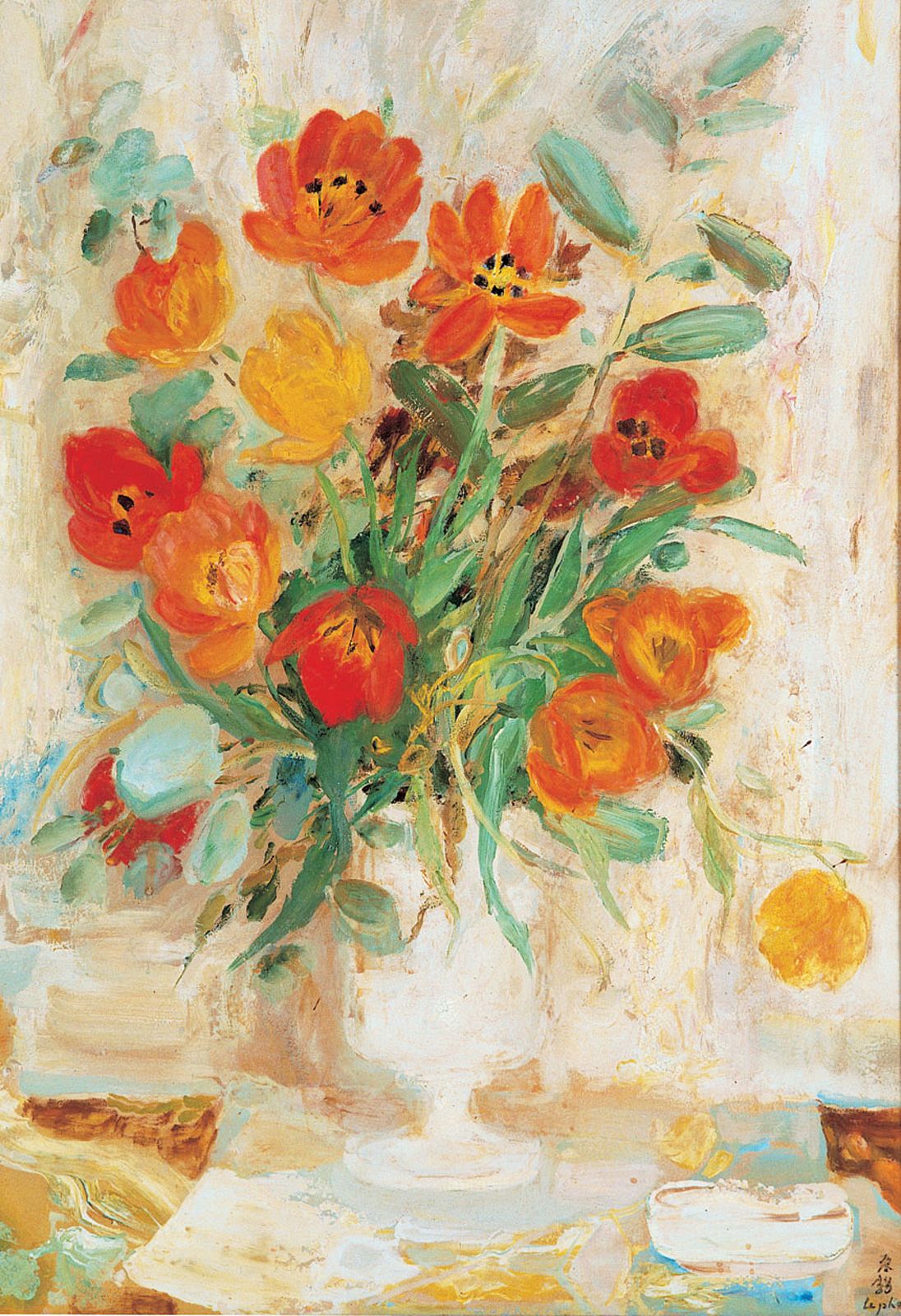
""Roses in a Vase" painted in 1958.
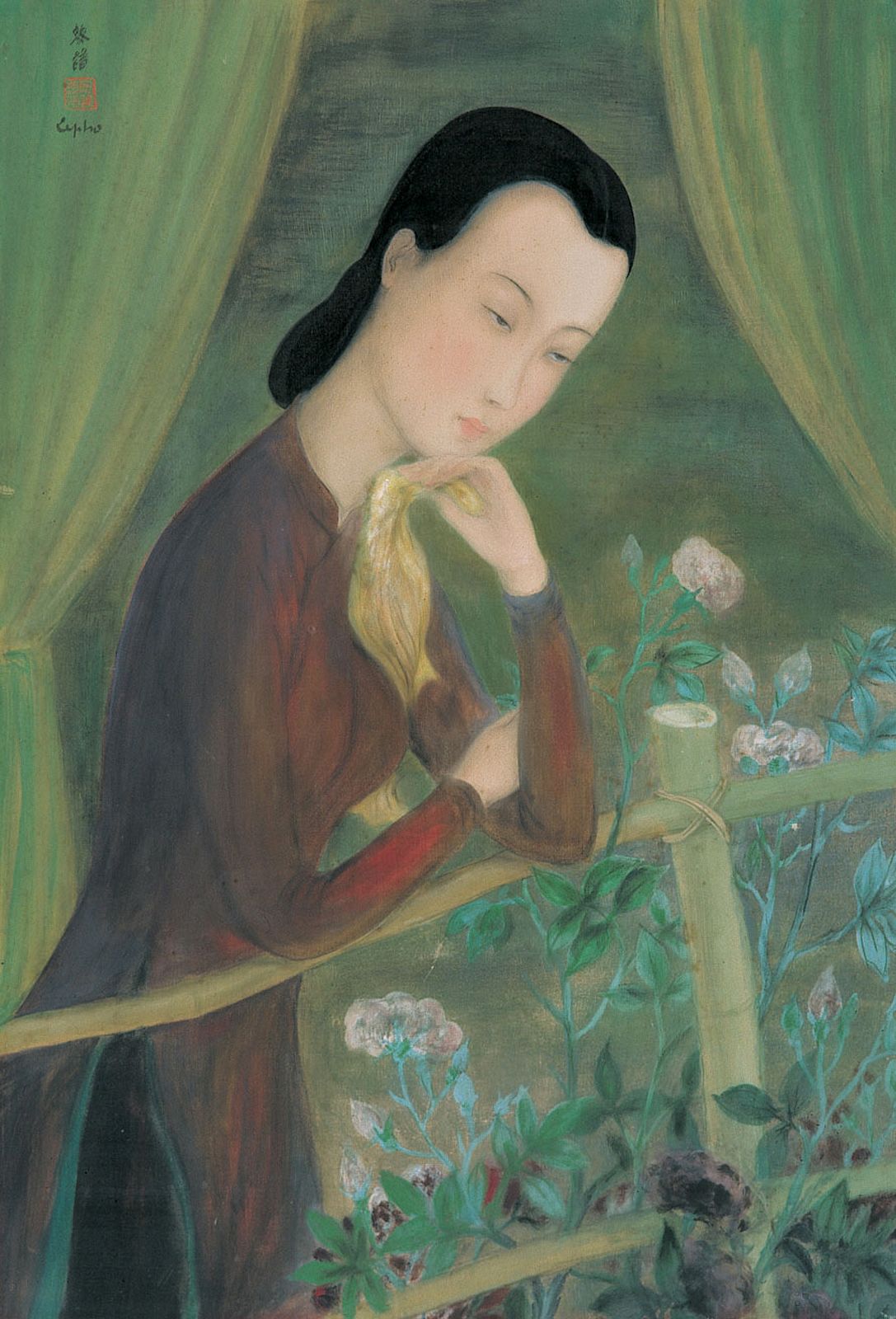
"Lady by a Floral Trellis" painted in 1938.
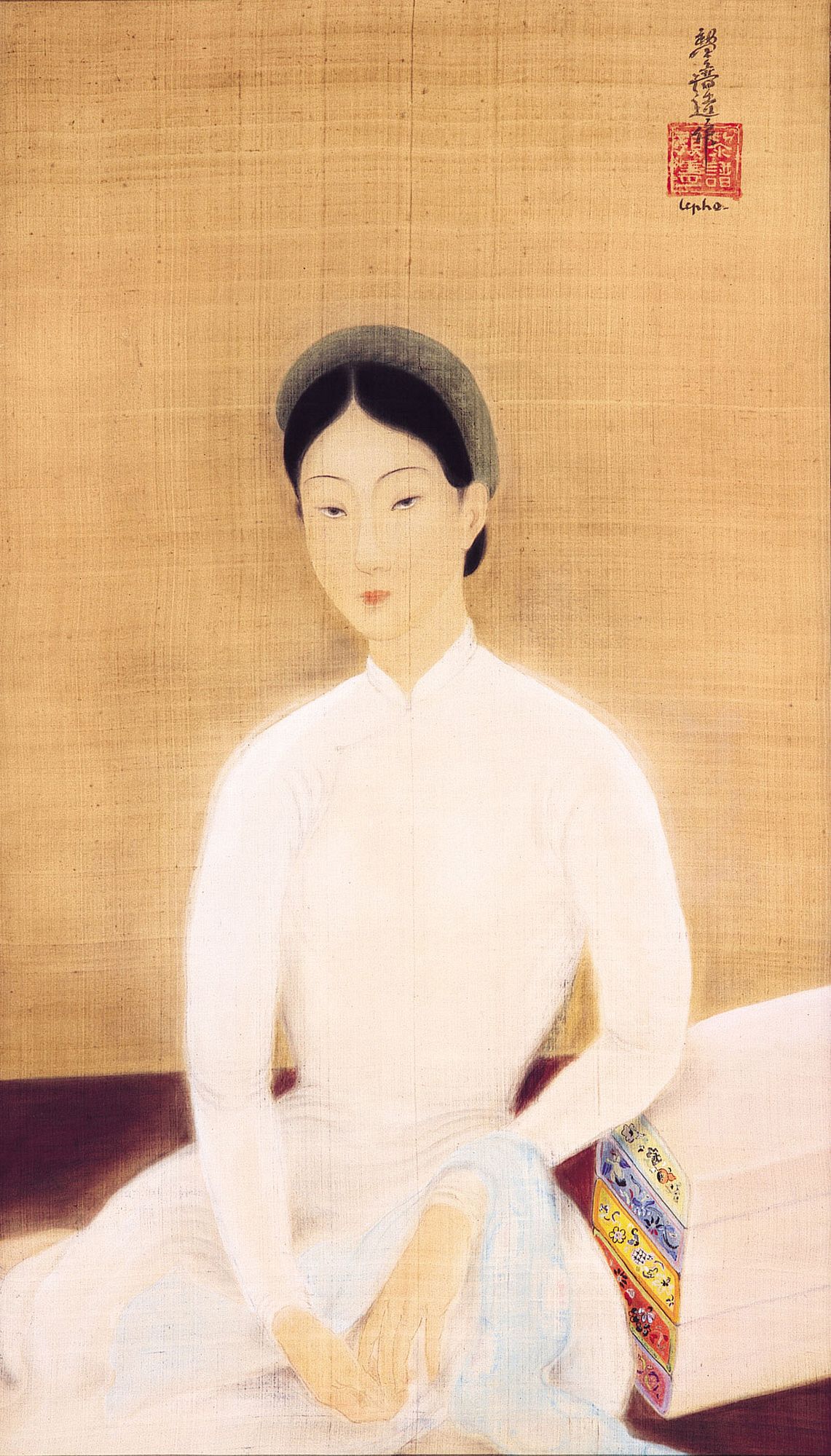
"Jeune Fille en Blanc" (Young Girl in White) painted in 1931-2.
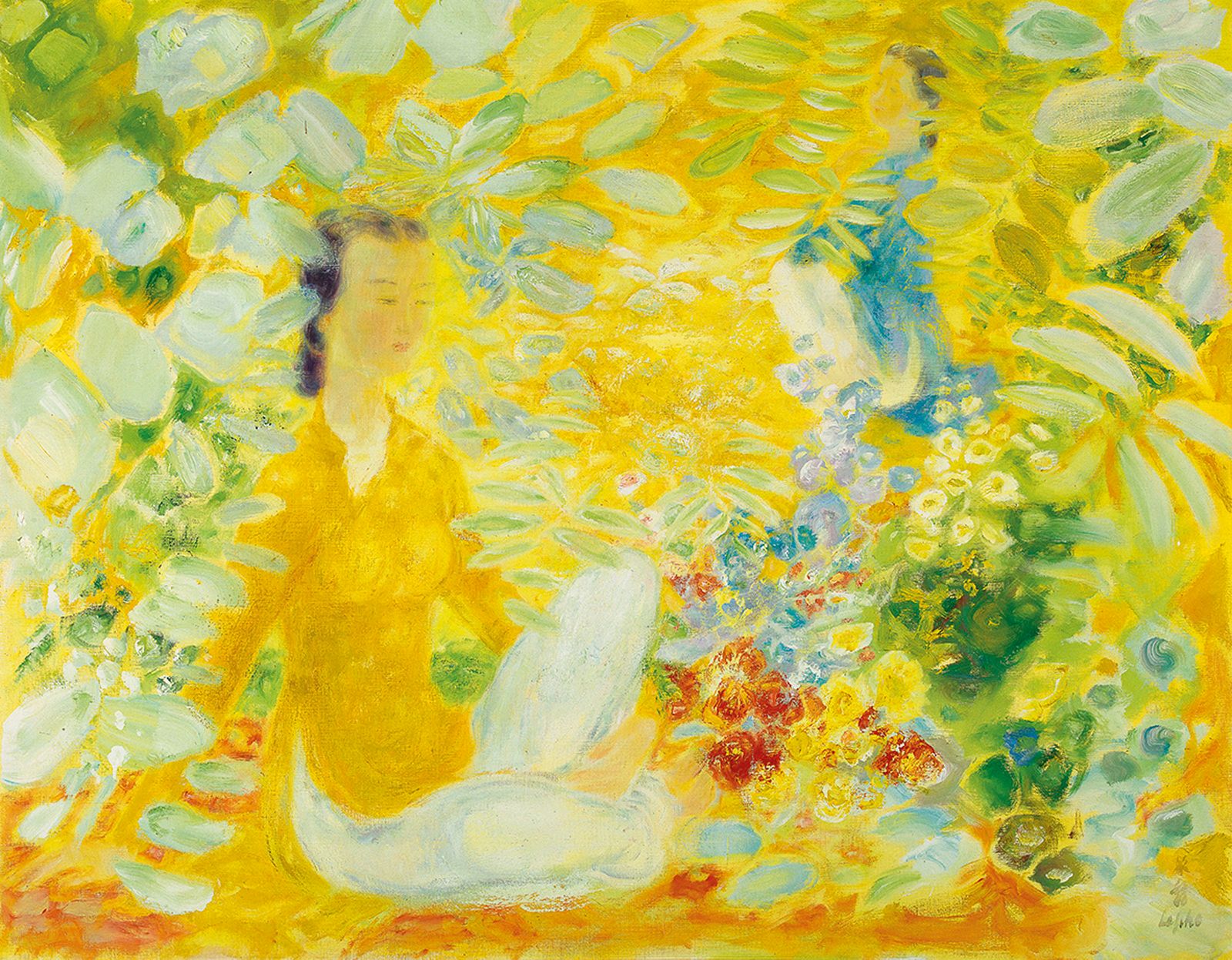
"Two Ladies in a Garden."
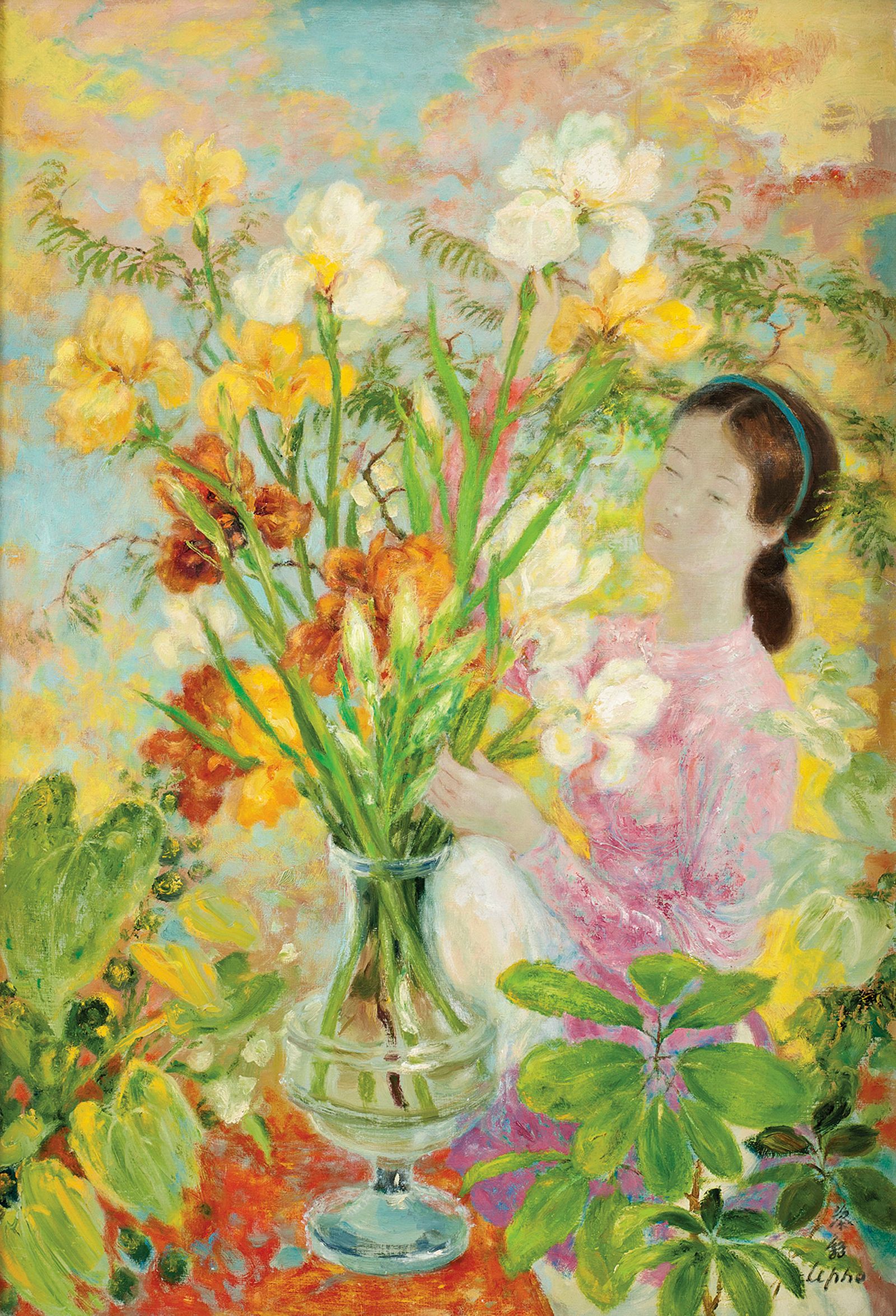
"La Femme aux Iris" (Young Girl with a Vase of Irises).
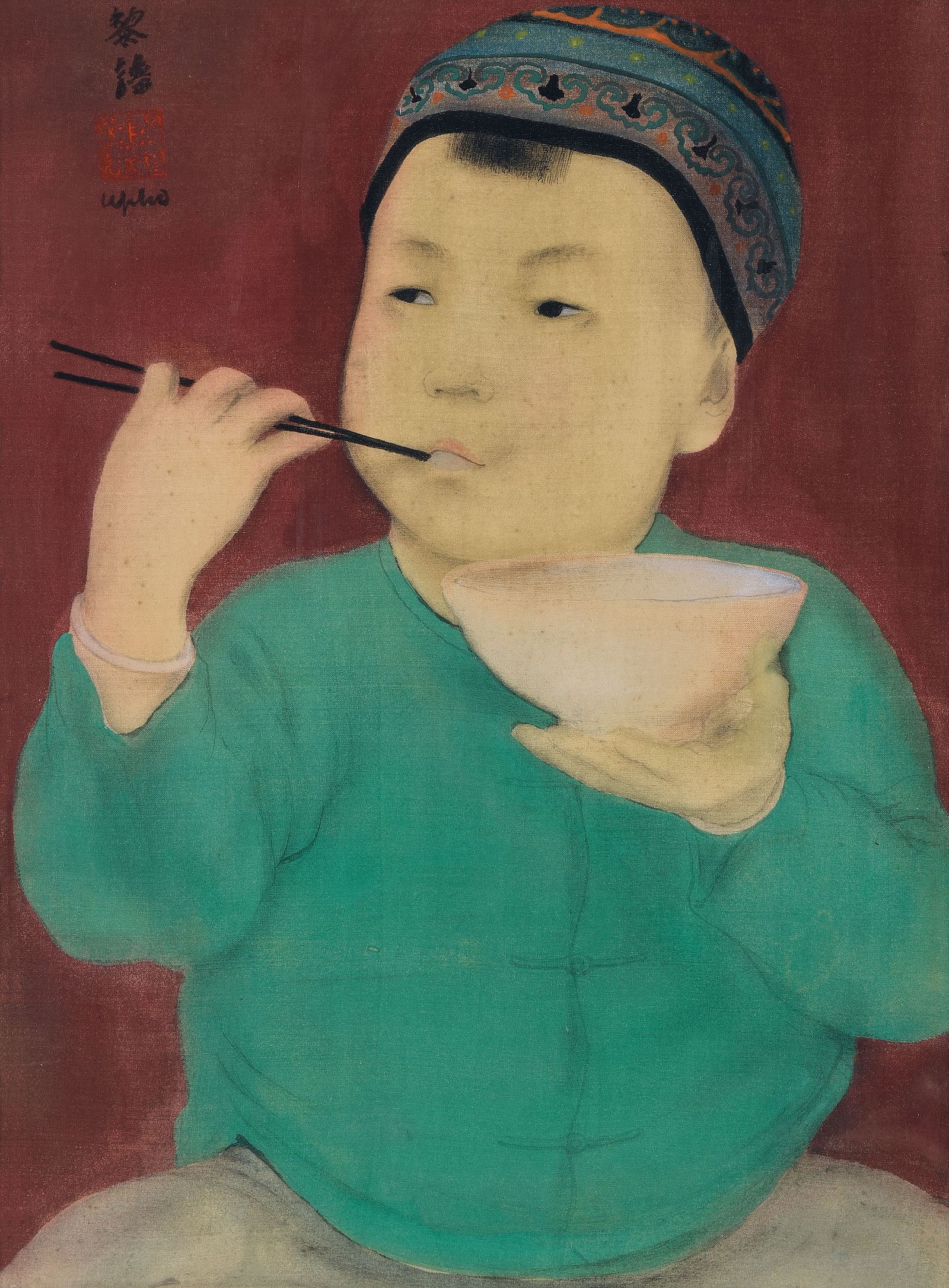
"Le Petit Garçon" (The Little Boy) painted in 1938.
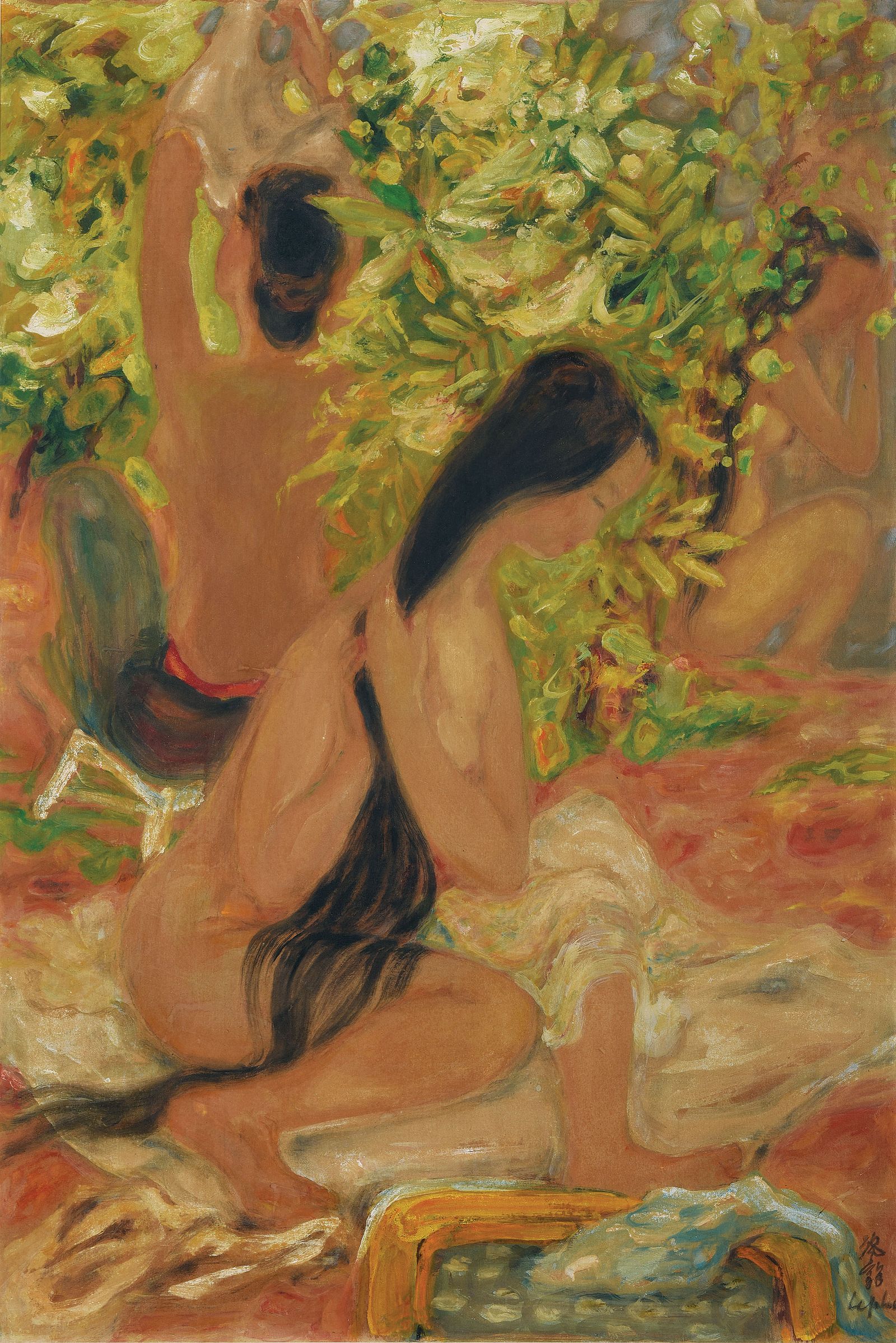
"Les Baigneuses" (The Bathers) painted in 1956.
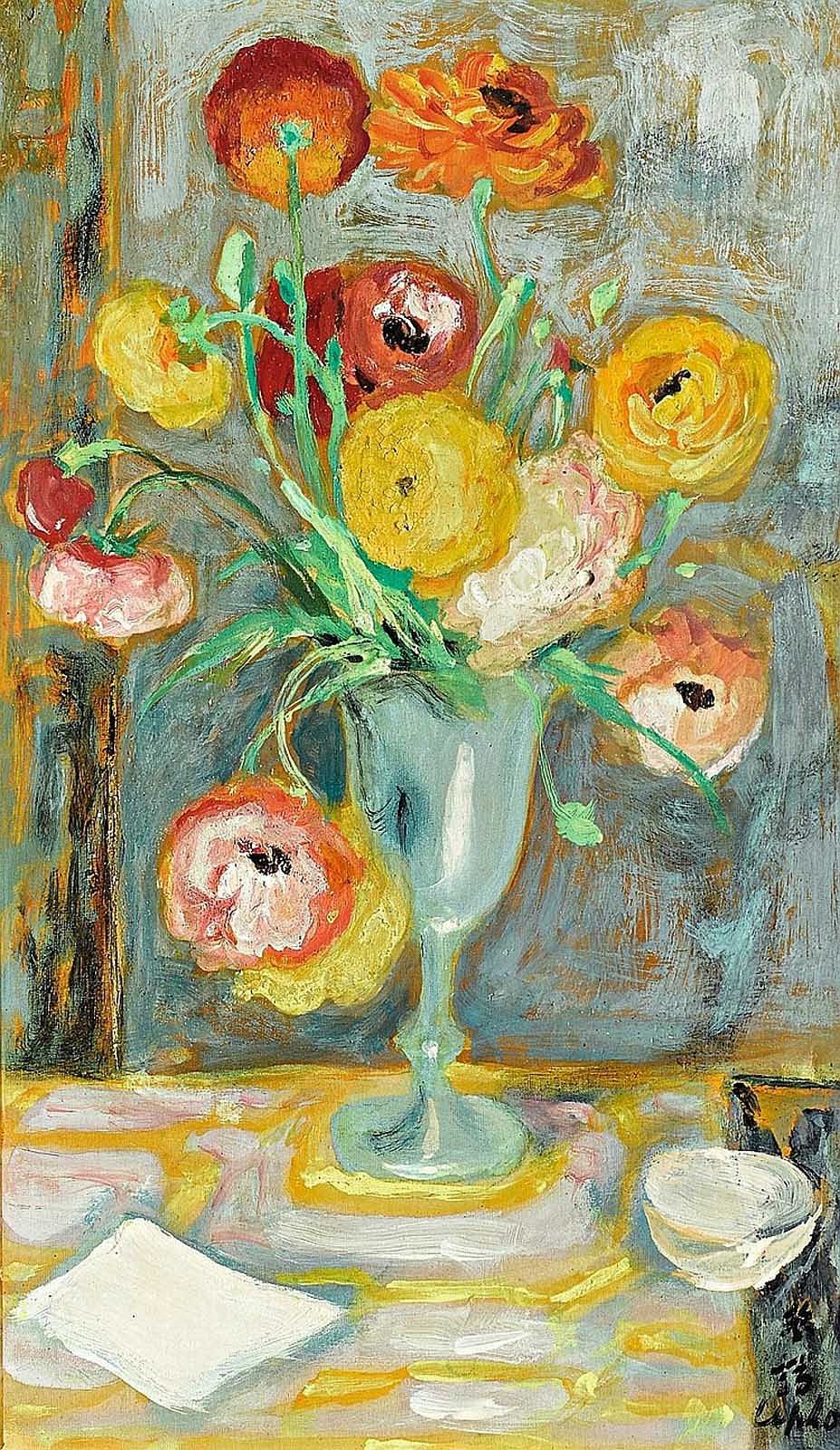
"Les Renoncules Jaunes" (The Yellow Ranunculus).

"La famille" (The Family) painted in 1938-40.
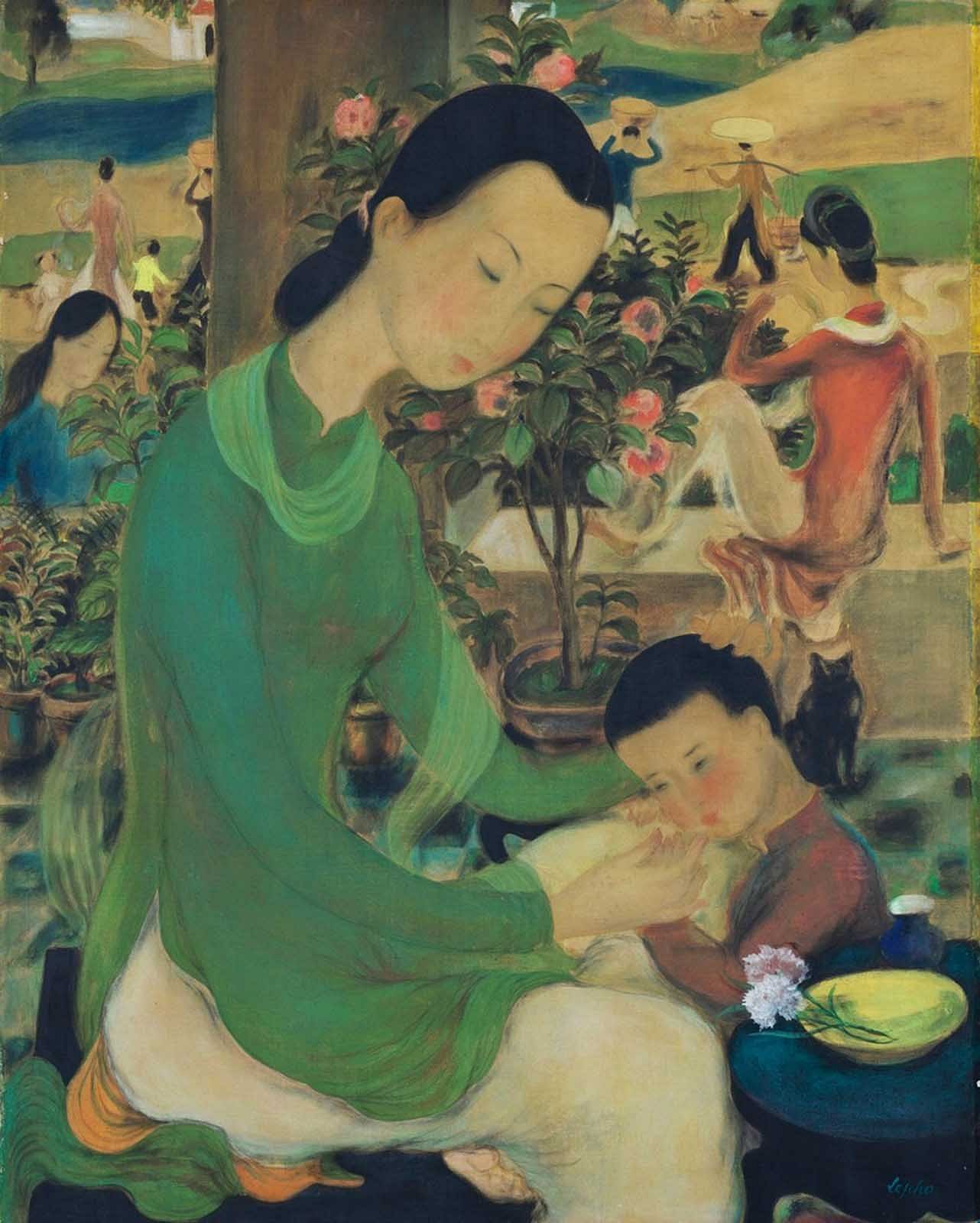
"Family Life" painted in 1937-39.

Lê Phổ and fellow painters in Hanoi, 1930.
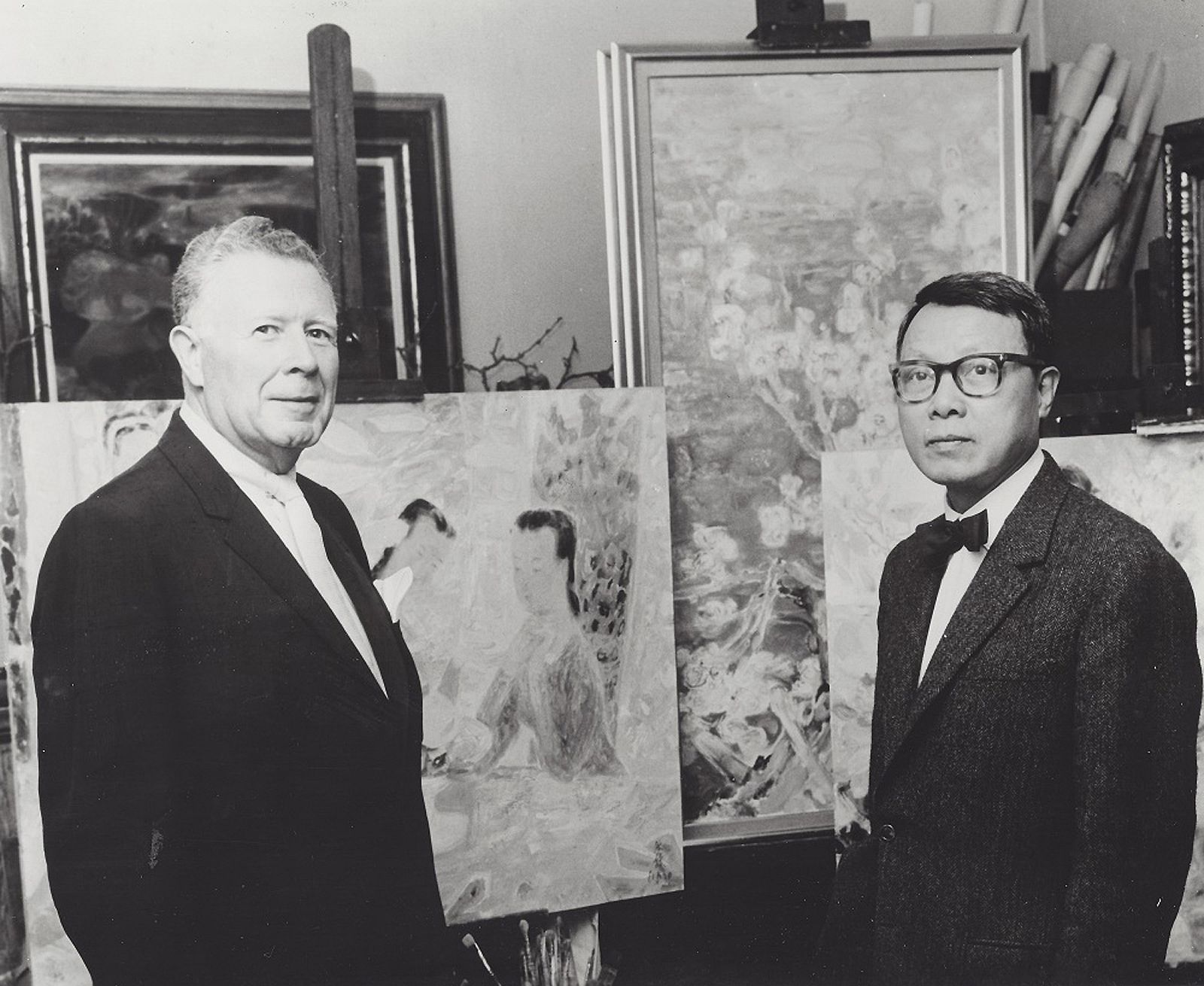
Lê Phổ with famed American art collector Wally Findlay Jr. in 1937.
[The top image is "View From the Hilltop," an oil on canvas work painted in 1937 which sold for US$840,000 in 2014. All images via Flickr user Manhhai.]

